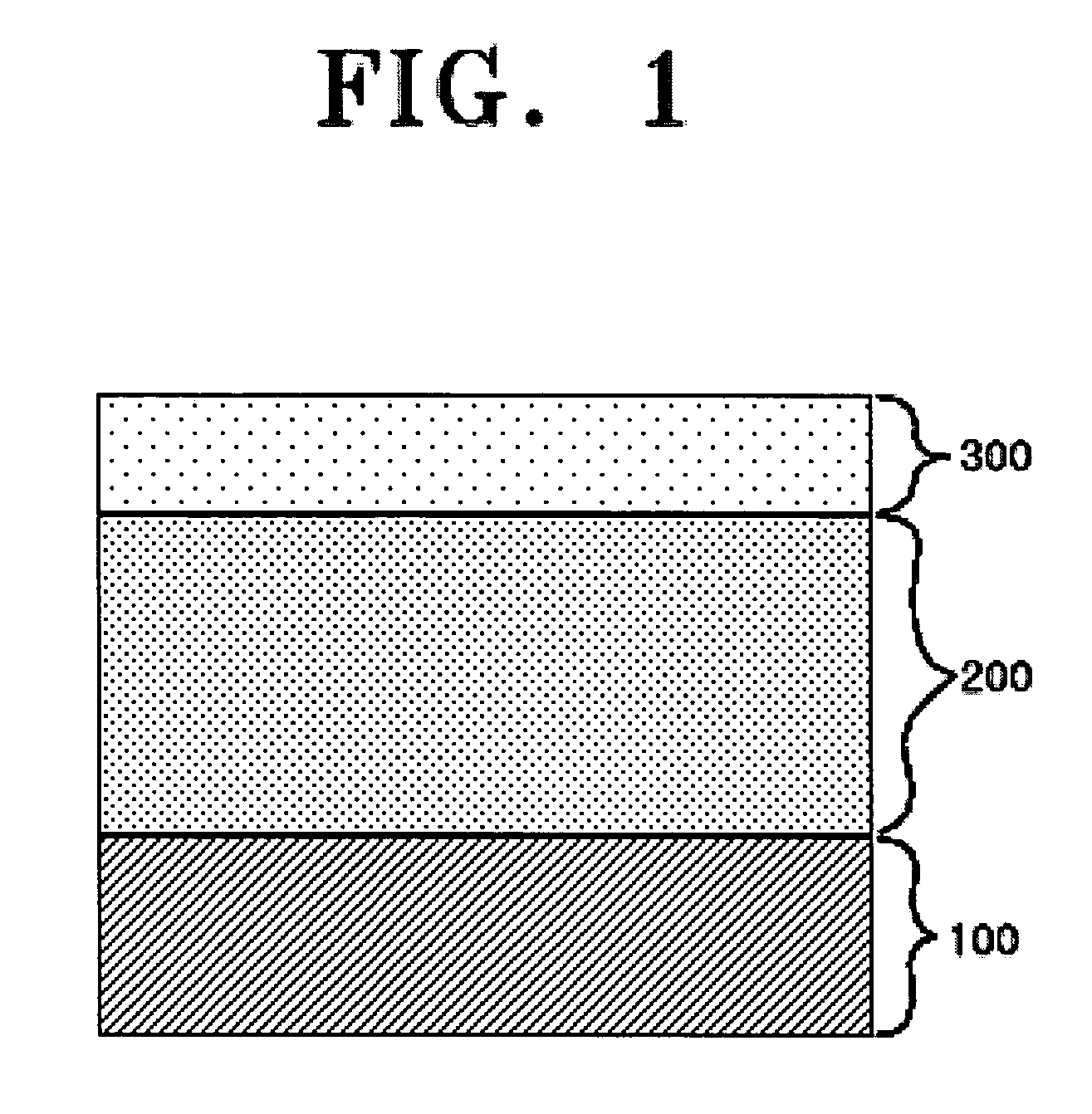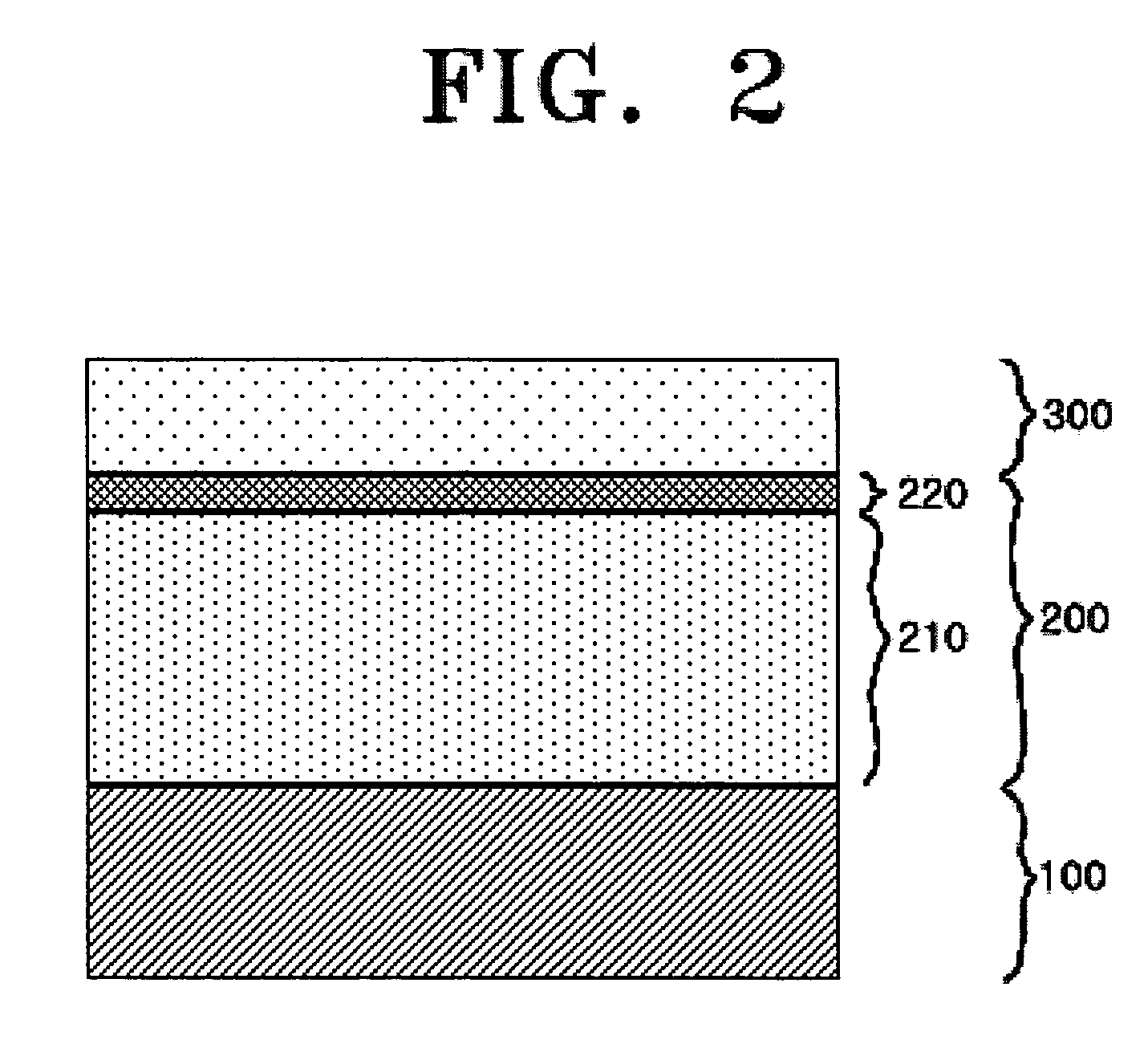Electrophotographic photoreceptor containing a chelate compound
a photoreceptor and chelate compound technology, applied in the field of electrostatic photoreceptors, can solve the problems of poor compatibility of polyamide resins with other resins, high hydrophilicity, and affect the electrical characteristic of protective layers, so as to improve the rate of production of photographic photoreceptors, improve the adhesive properties, and improve the electrostatic characteristics
- Summary
- Abstract
- Description
- Claims
- Application Information
AI Technical Summary
Benefits of technology
Problems solved by technology
Method used
Image
Examples
example 1
[0065]3 parts of α type titanylphthalocyanine and 2 parts of polycarbonate Z resin (IUPILON Z-200 manufactured by Mitsubishi Gas Chemical Co., Ltd.) were mixed with 45 parts of chloroform, and ground by sand milling for 1 hour to prepare a dispersion.
[0066]Then, 15 parts of the electron transferring material represented by the following Formula 5, 30 parts of the hole transferring material represented by the following Formula 6, and 55 parts of the above polycarbonate Z resin were dissolved in 300 parts of chloroform to prepare a solution.
[0067]
[0068]The above dispersion and the above solution were mixed in a mixing ratio of 1:8, and stirred by a homogenizer until the resulting mixture became uniform, to obtain a coating liquid for forming a photoconductive layer. Then, the coating liquid was applied by a ring coating process on a 30 mm diameter aluminum drum which had been treated by anodic oxidation. The resulting coating was dried for 1 hour at 100° C., to obtain a single layer t...
example 2
[0070]On the same aluminum drum as used in Example 1, a solution in which 60 parts of polycarbonate resin (Panlite C-1400 manufactured by Teijin Kasei Co., Ltd.) and 40 parts of the hole transferring material represented by the above Formula 6 were dissolved in 300 parts of chloroform, was coated and dried for 1 hour at 100° C., to form a charge transferring layer of 20 μm thickness.
[0071]A coating liquid obtained by dispersing 7 parts of α type titanylphthalocyanine, 6 parts of silicone resin (KR-255 manufactured by Shin-Etsu Chemical Co., LTD.) and 187 parts of methyl ethyl ketone by sand milling. The coating liquid was coated onto the charge transferring layer on the drum by a ring coating process and dried to form a charge generating layer of 0.4 μm thickness. In this way, a laminate type electrophotographic photoreceptor was prepared.
[0072]Then, to 50 parts of 8% by weight solution (solvent; methanol: 1-butanol=3:2) of polyamide resin (AMILAN CM-8000 manufactured by Toray), 2 p...
PUM
| Property | Measurement | Unit |
|---|---|---|
| thickness | aaaaa | aaaaa |
| thickness | aaaaa | aaaaa |
| thickness | aaaaa | aaaaa |
Abstract
Description
Claims
Application Information
 Login to View More
Login to View More - R&D
- Intellectual Property
- Life Sciences
- Materials
- Tech Scout
- Unparalleled Data Quality
- Higher Quality Content
- 60% Fewer Hallucinations
Browse by: Latest US Patents, China's latest patents, Technical Efficacy Thesaurus, Application Domain, Technology Topic, Popular Technical Reports.
© 2025 PatSnap. All rights reserved.Legal|Privacy policy|Modern Slavery Act Transparency Statement|Sitemap|About US| Contact US: help@patsnap.com



